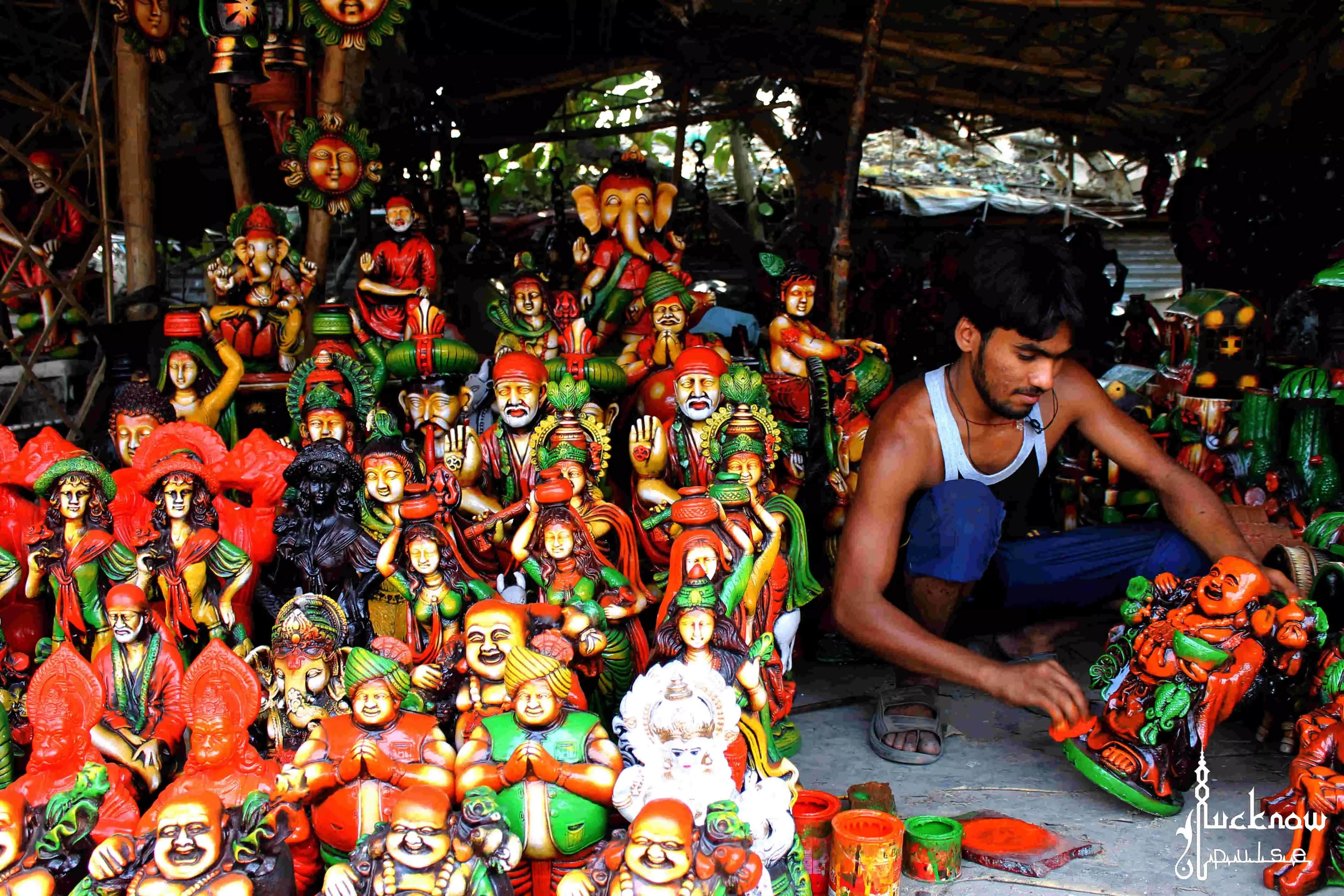The Potter's Wheel of Time
The Potter's Wheel of Time

Long before there was iron, copper and brass, there was clay, and plenty of potters in this alluvial rich part of the Gangetic plains. There was a time when Lucknow was home to a large community of Kumhars.
Kumhar is a caste of potters who get their name from the Sanskrit word kumbharkara, or makers of pots. Often called Prajapati, the kumhars claim descent from Prajapati Daksha son of Brahma, the lord of the world.
The kumhars have had a close connection to the earth for aeons. There are sub-castes within the Prajapati community like Kanaujia and Baradiya. Most of the potters in Lucknow claim that their ancestors came here once the city became more important than the ancient imperial capital of Kannauj.
During the 19th Century, artisans like potters were well paid and most respected. While there was unrest in Bengal and Delhi, Lucknow was an island of peace and prosperity towards the end of the 18th Century.
Till the first half of the 19th Century, the city was a haven for artisans. They made up a large part of the population here.
The rulers of the time welcomed talent and were appreciative of traditional crafts. They paid generous salaries to artisans engaged in the making of ornamental objects and fine embroidery on silk and muslin cloth.
The clothes, shoes and jewellery made by Lucknow's embroiderers and tailors were valued by citizens, and the crafts created here were famous worldwide.
For what the potters did with clay can only be called magical.
Clay figurines made in Lucknow were much sought after by traders on the Great Silk Route connecting China to Europe. The clay found here is special. It is called chuhi and is bright red in colour. It has been used for ages to make attractive lamps and crockery.
With the dawn of goods produced industrially and lack of patronage by the state, clay pottery has suffered neglect. Many potters have gradually taken on other professions to make more money like farming. Many graze cattle, and many more are daily wage labourers.
Kabir the mediaeval poet was a weaver by profession but he was fascinated with the art of the potter. In the potter's love for his pots, he found not just a way to earn money but worship.
He saw the pot taking on beautiful shapes. The potter moulded his creation like a guru sculpts a student open to learning. The potter is likened to a wise teacher, who protects the pot on the wheel with his palm from inside, giving the supple clay social as well as spiritual shape by hammering it from the outside.
In a couplet Kabir imagines a conversation between the potter and the mud he kneads into whatever shape he wants. Says the poet that the potter plays with mud and kneads in life, but a day comes when it is mud that kneads the potter on his death: maati kahe kumhar ko, tuh kya raundhe mohey, ek din aisa aayega maiin raundhoongi tohey…
Chinhat's Glazed Pottery
Even a few decades ago Chinhat had buzzed with business in glazed pottery. While Chinhat pottery named after a village in an area south east of Lucknow, is available at city outlets, the colourful potter's village has vanished.
A few homes and shops of potters are dwarfed today by mostly substandard buildings. In the past when the state was aware of the beauty and value of pots created in Chinhat, the rustic looking glazed pottery and ceramics had earned a decent income for the artisans. Unfortunately no longer.
After coming to Lucknow in the 19th Century in large numbers, the potter community had spread to other parts of Uttar Pradesh (UP). The surahi or water pots made in Rampur are appreciated to this day. Khurja is famous for ceramic pottery. Relief work in orange, red and brown against a white background is the signature design of Khurja pottery. The vessels made there are exquisite.
In Chunar, the potters glaze the wares with a brown slip that is drowned in multiple hues. Meerut and Hapur too produce wonderful water containers decorated with striking floral patterns that are valued by those who know.
Diwali is the time when potters are seen around the city in strength. The pavements in the city overflow with objects made of clay. After all, Diwali is round the corner and winter is not far behind. At this time of the year when days will get shorter and the cold and dark nights seem endless, a thousand and one clay lamps are lit to make sure that joy does not disappear from the life of human beings. Happy Diwali, may the clay lamps light up the life of all humanity!
Democracy in Congress
The opinion in Lucknow is that it was so sporting of Shashi Tharoor to contest the Congress Party presidential election with such infectious enthusiasm. Perhaps he was aware that most votes will go in favour of continuity and not for a revamp of party affairs. But Tharoor was not intimidated by thoughts of defeat.
Even in defeat Tharoor is seen as a champion of values so dear to a healthy democratic society. That he stood by the democratic process till the end is what is important.
That Tharoor did not withdraw from the contest but gave only his best till the results announced the sweeping win of Mallikarjun Kharge is appreciated.
Apart from proving that no member of Gandhi heads the Congress any more, what this election will be remembered for is that it was held! Tharoor's participation in this election has given inner party democratic values a huge boost.



